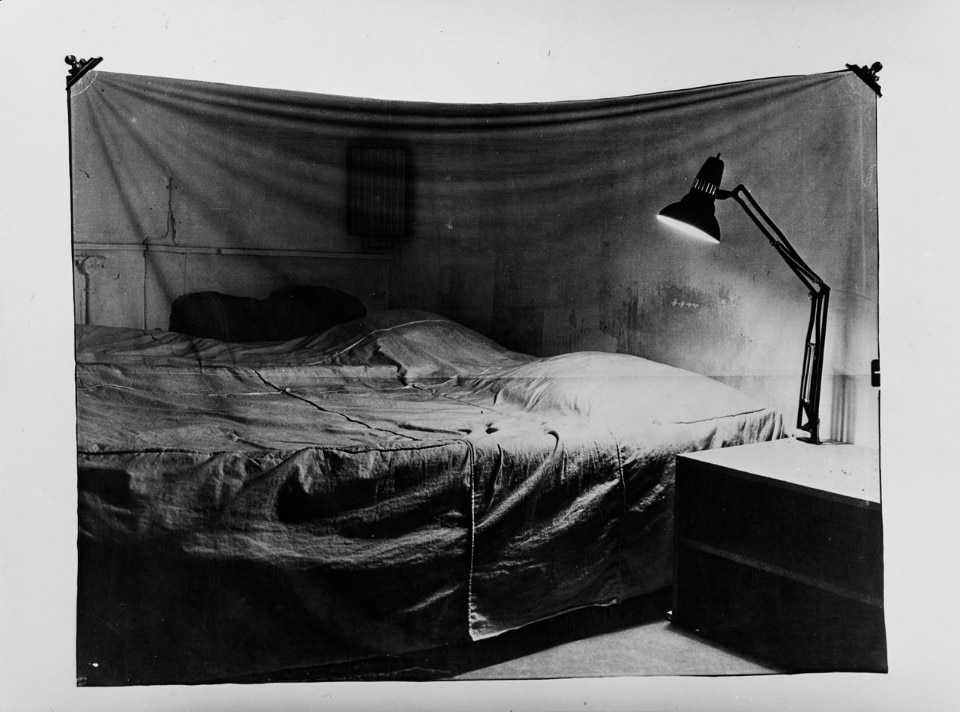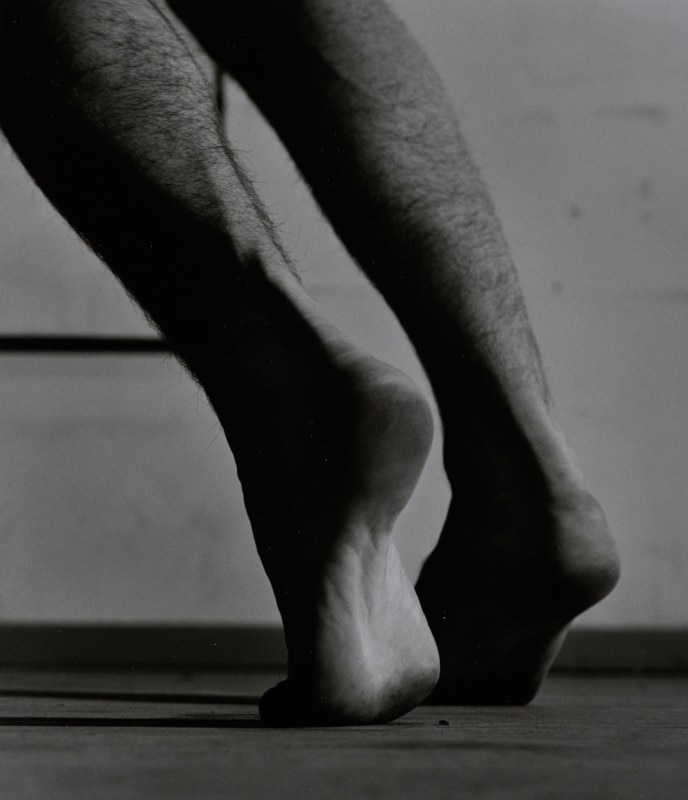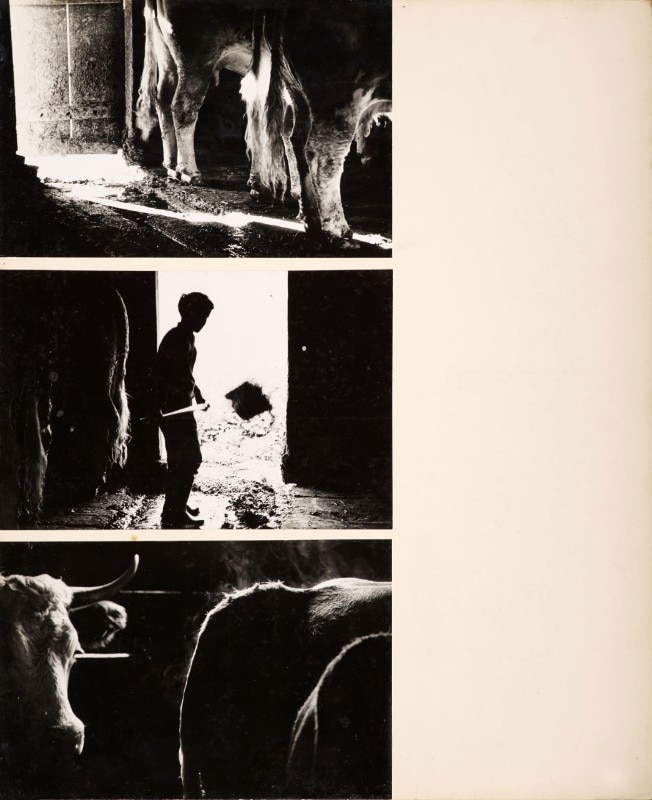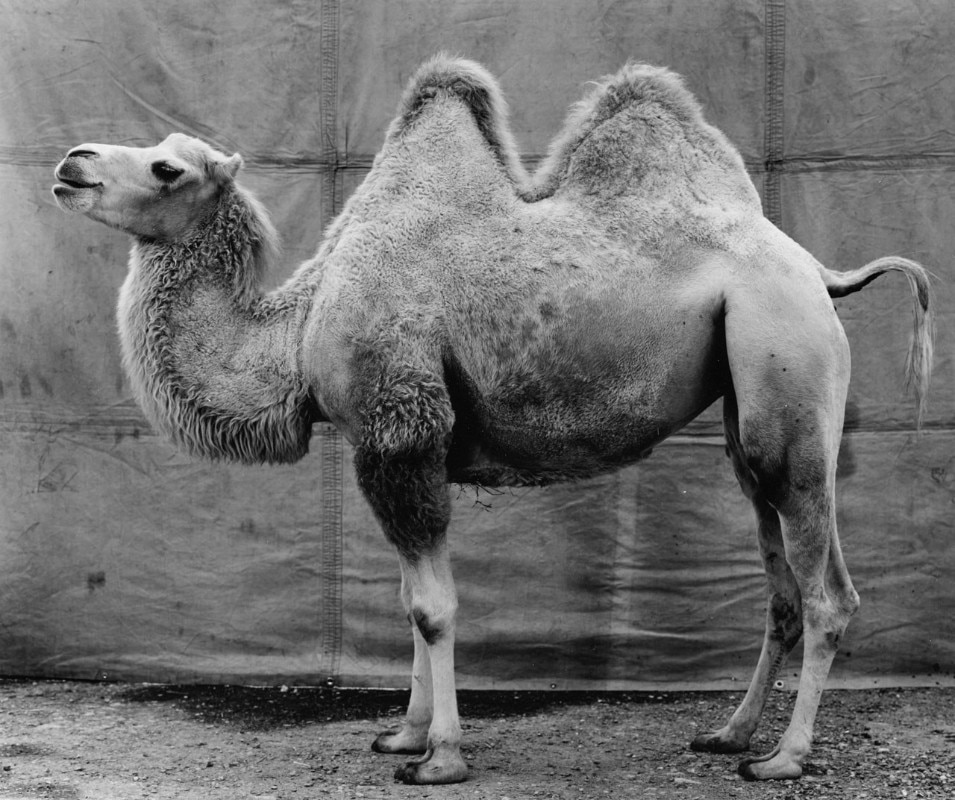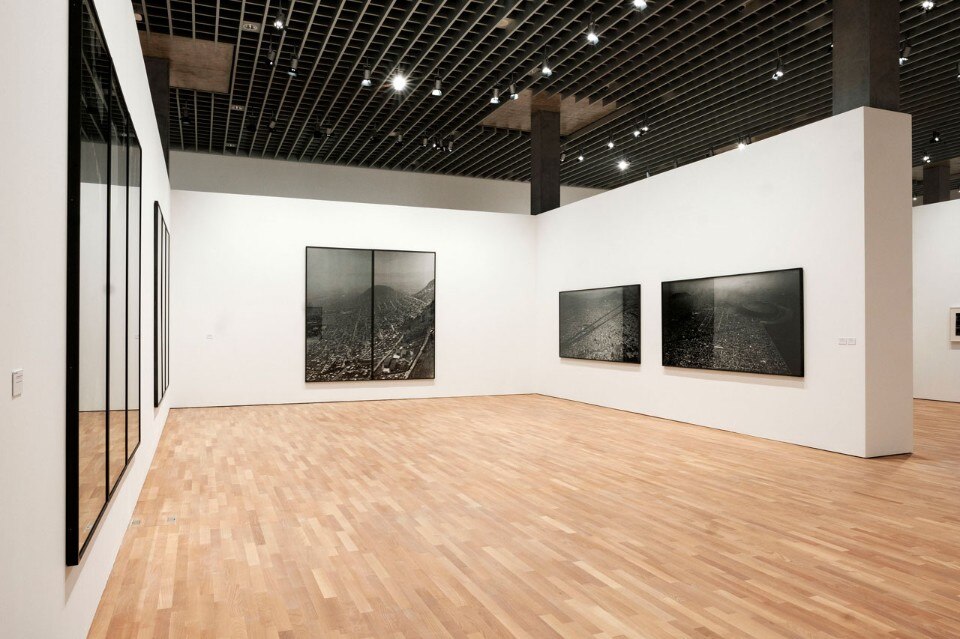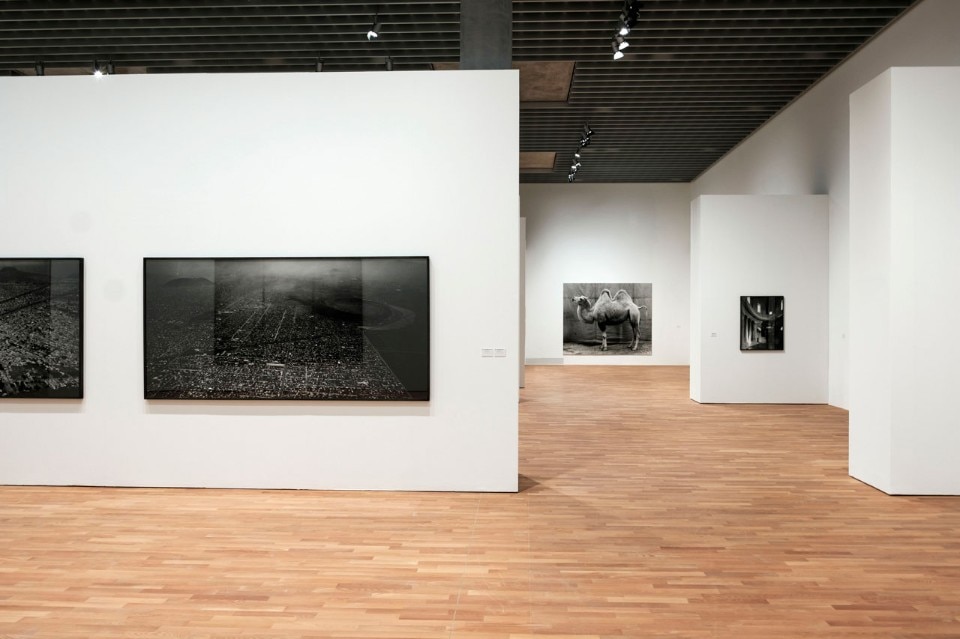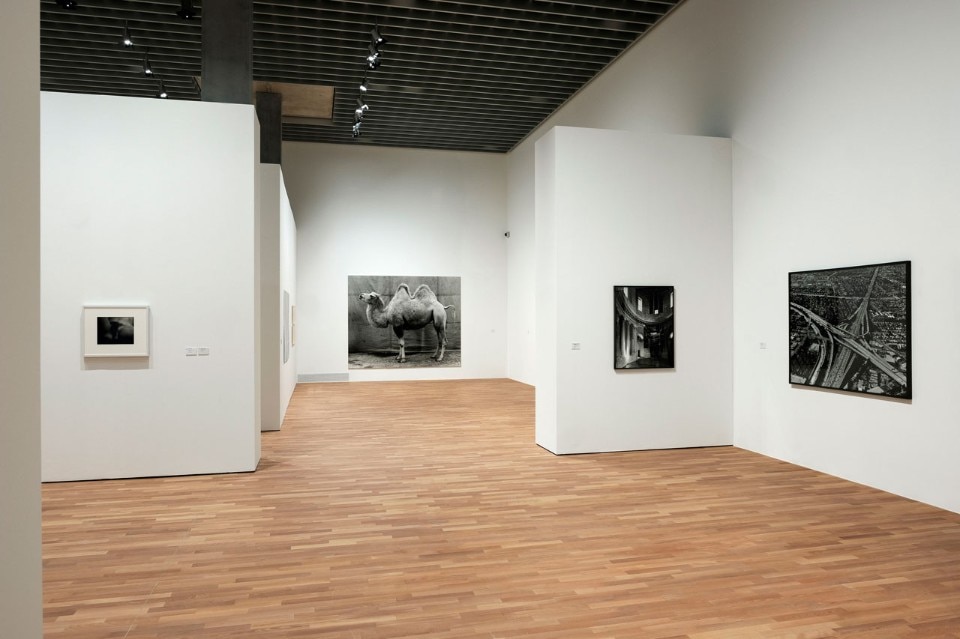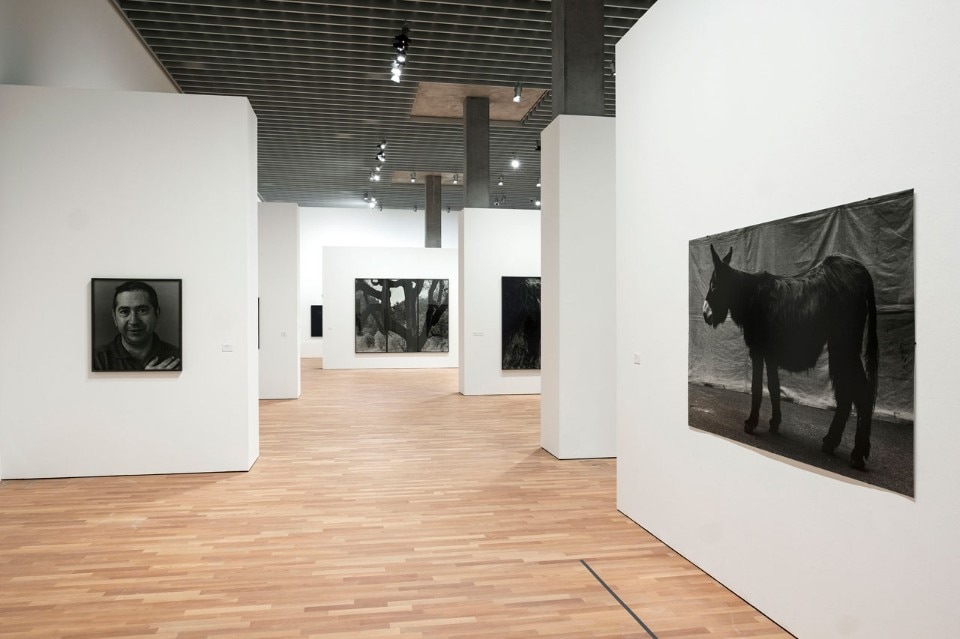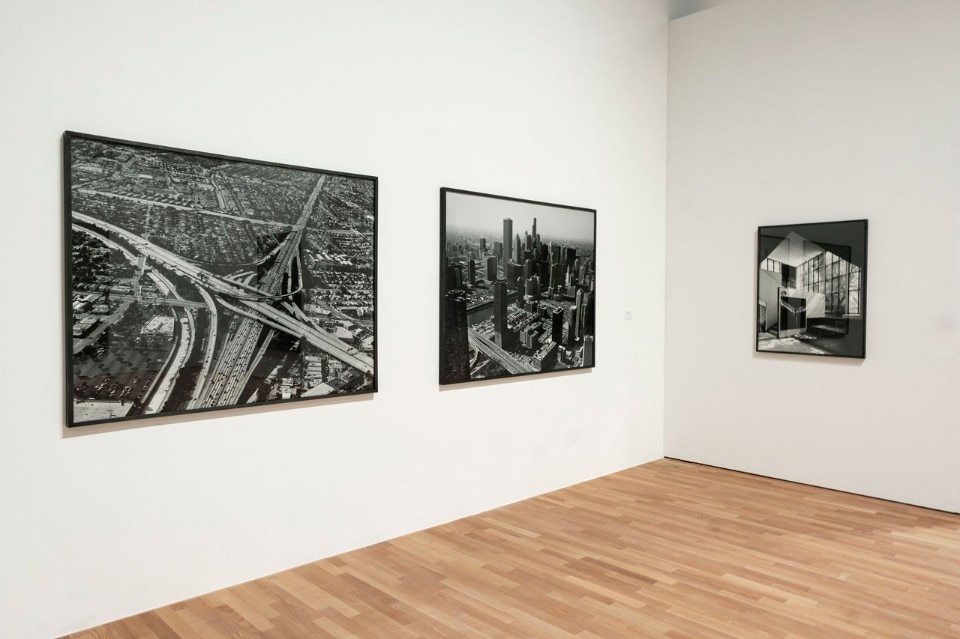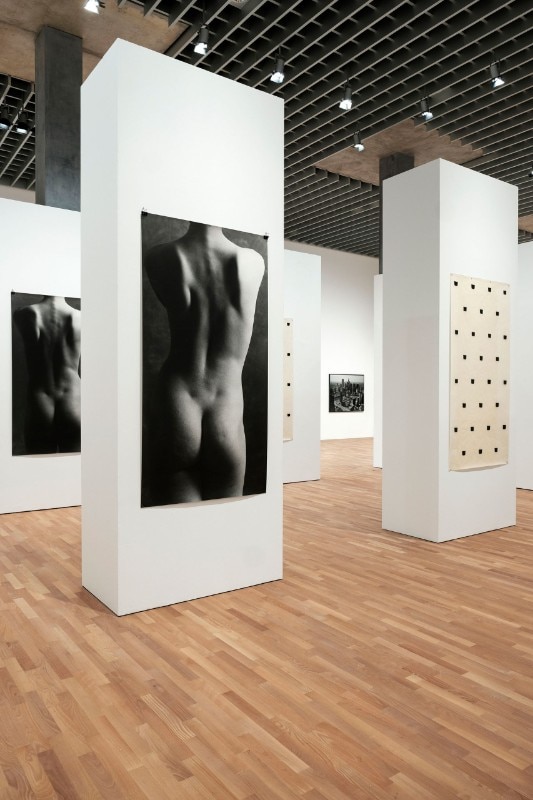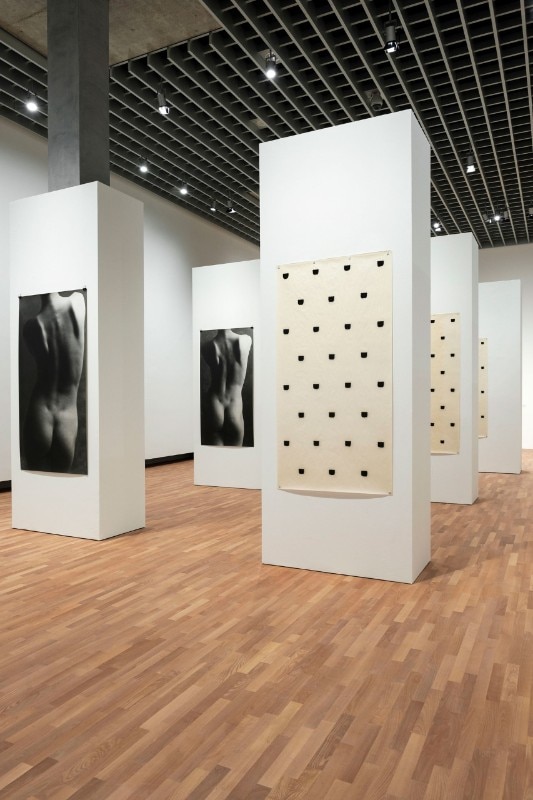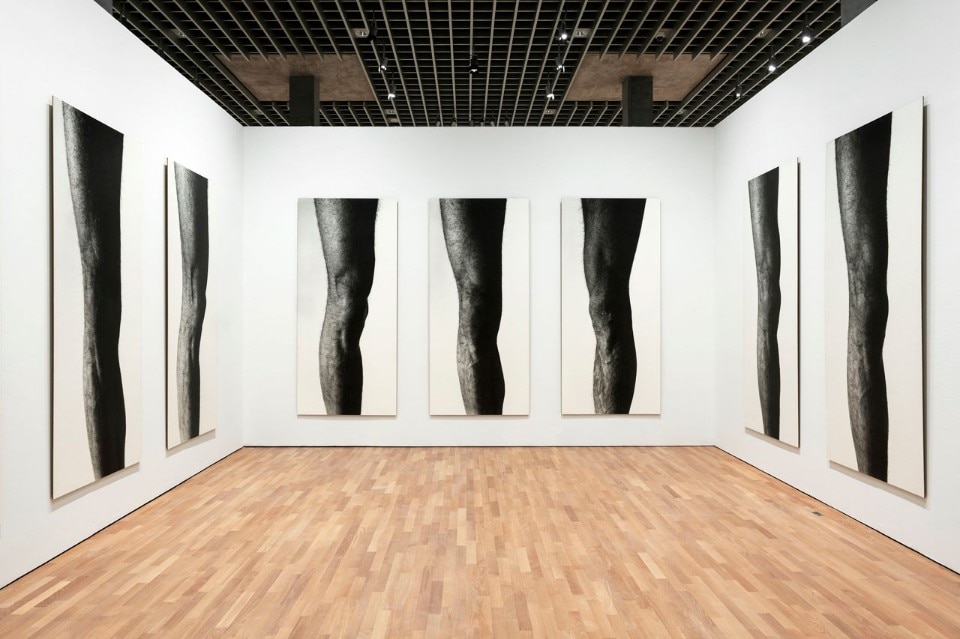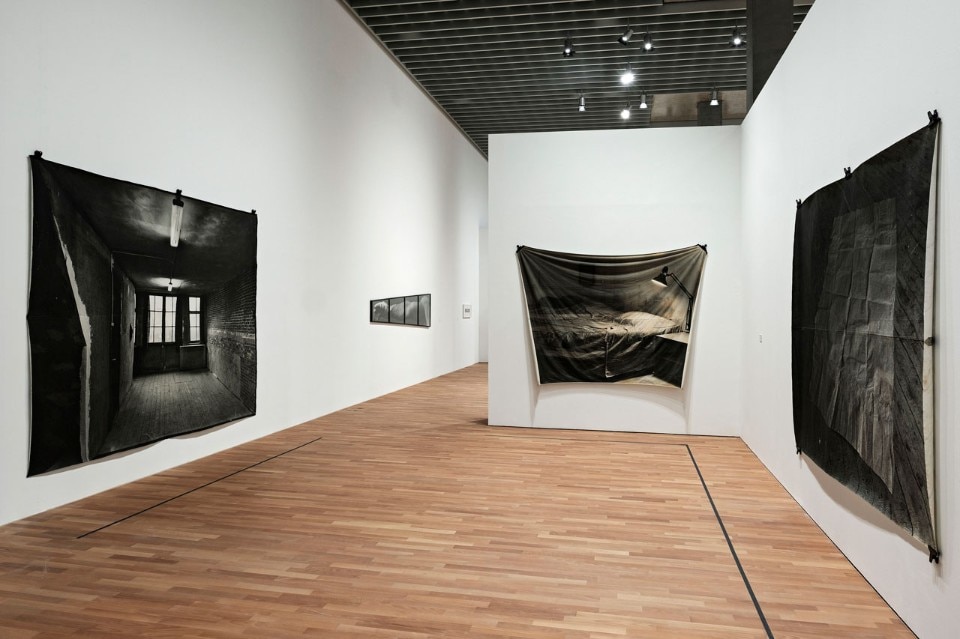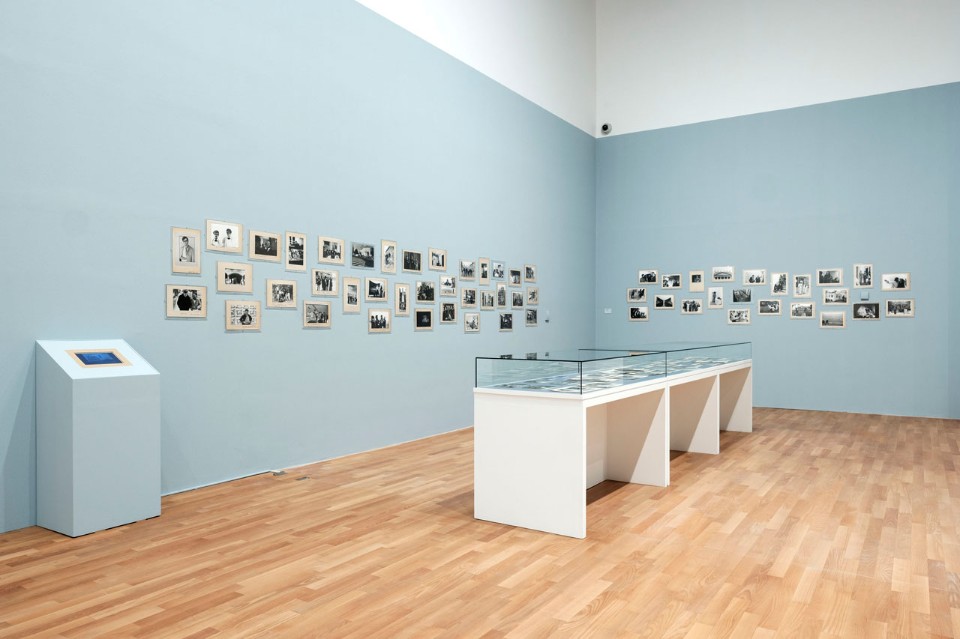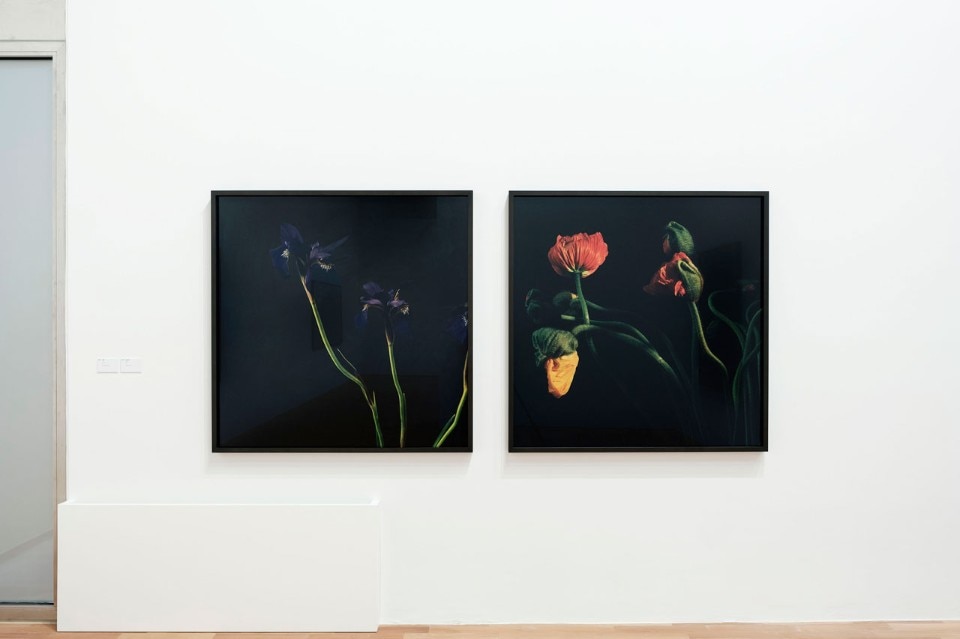The poster shows us a lion with a gallant air, photographed in profile, with a full mane and a proud gaze. The subject is set against a stark background, a threadbare circus tent, a strip of unpaved ground. Identical photographs emerge of an elephant, an ostrich, a camel, a chimpanzee, a rhinoceros, a cow, a donkey and a pig. Taken from zoos, circuses and nature reserves, they are all in the same epigraphic pose, in the style of a 1950s wood-cut, standing straight and proud. Behind, the same creased backdrop. Balthasar Burkhard took these pictures in 1997 for a children’s book, (“Klick!”, sagte die Kamera). He later printed them in their current size, hanging them unframed, set a hand’s-breadth from the ground, each animal shown in actual size. Here the exotic beast shown docile with the command of the pose, bent to the form of the portrait. And here the courtyard animal risen in stature by the artifice of monumentality. Nature is cancelled by the staging. Everything is artifice, but it strives to appear real.
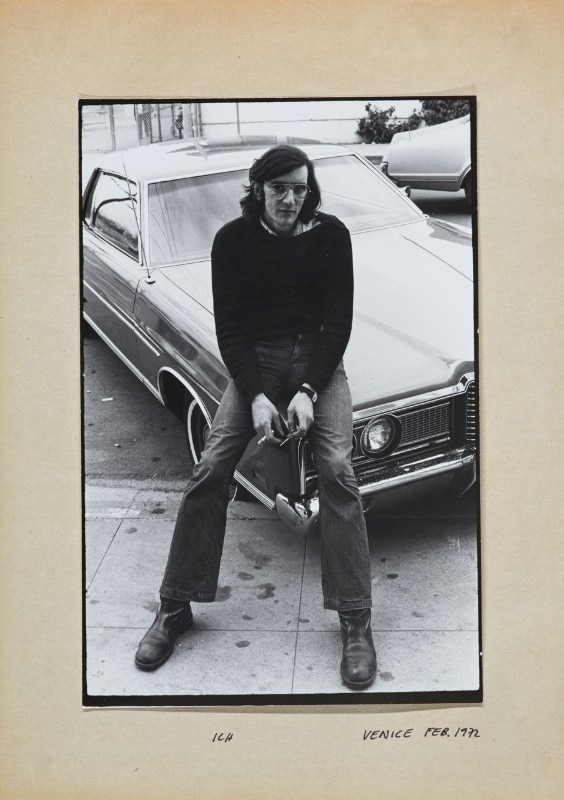
 View gallery
View gallery

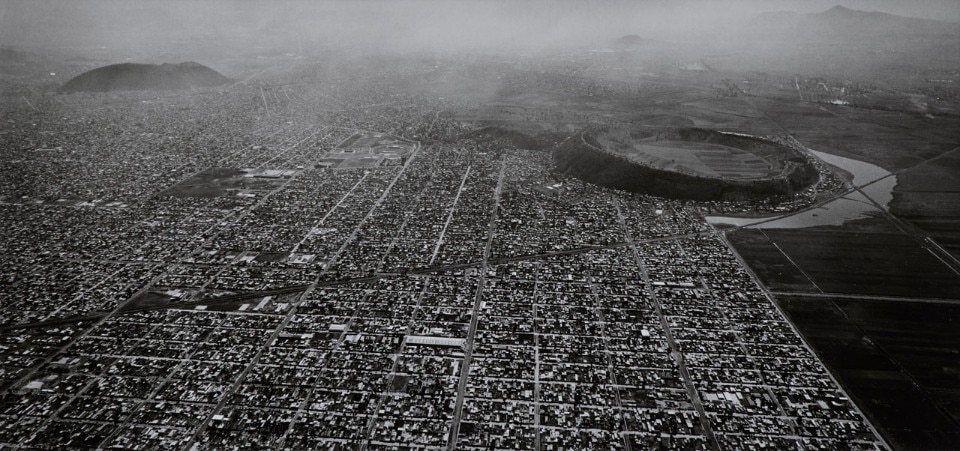
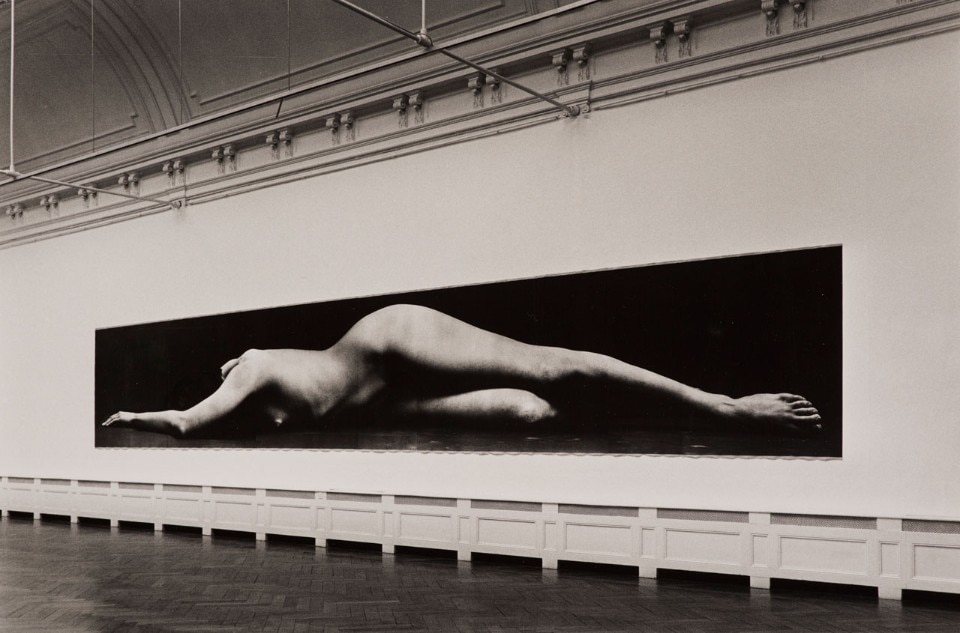
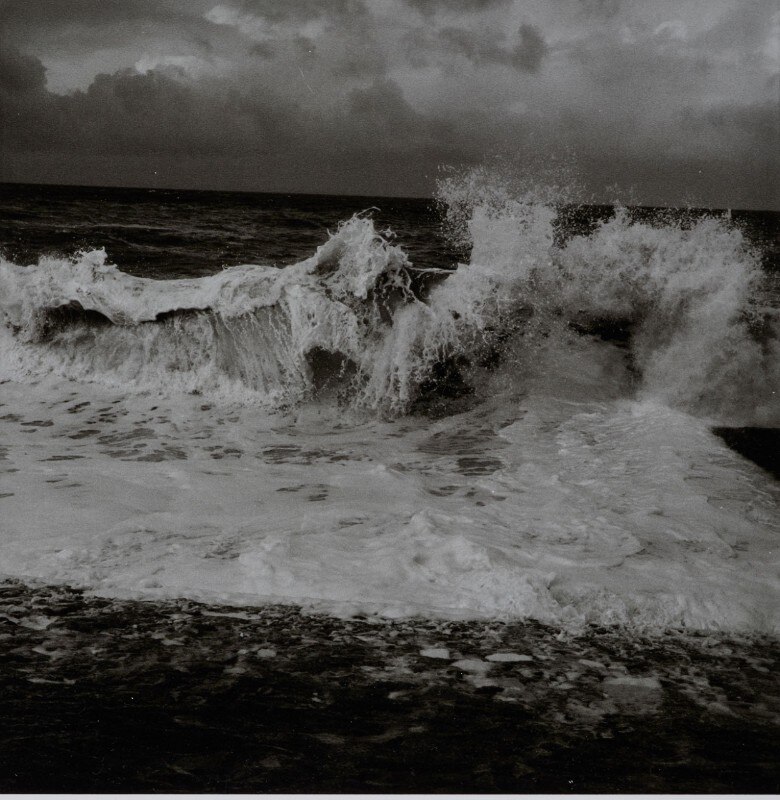
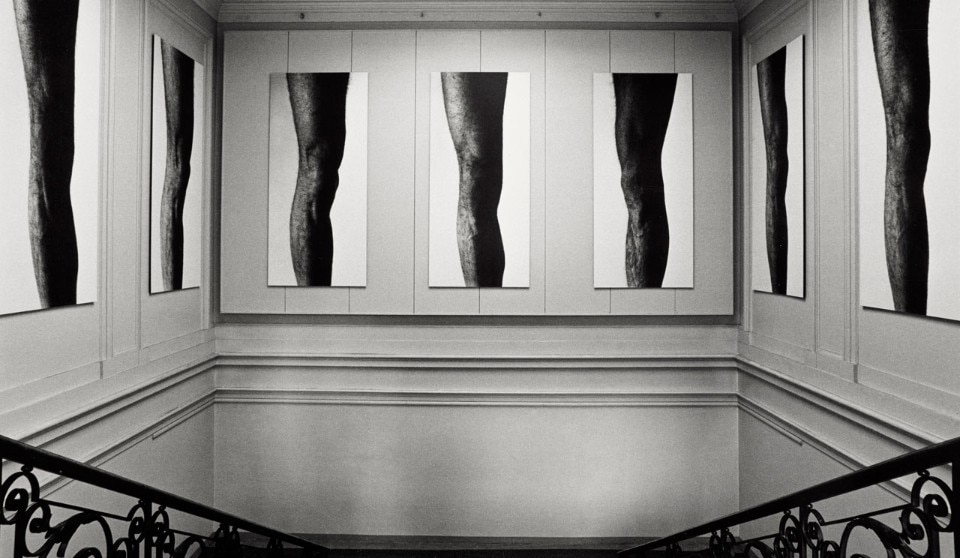
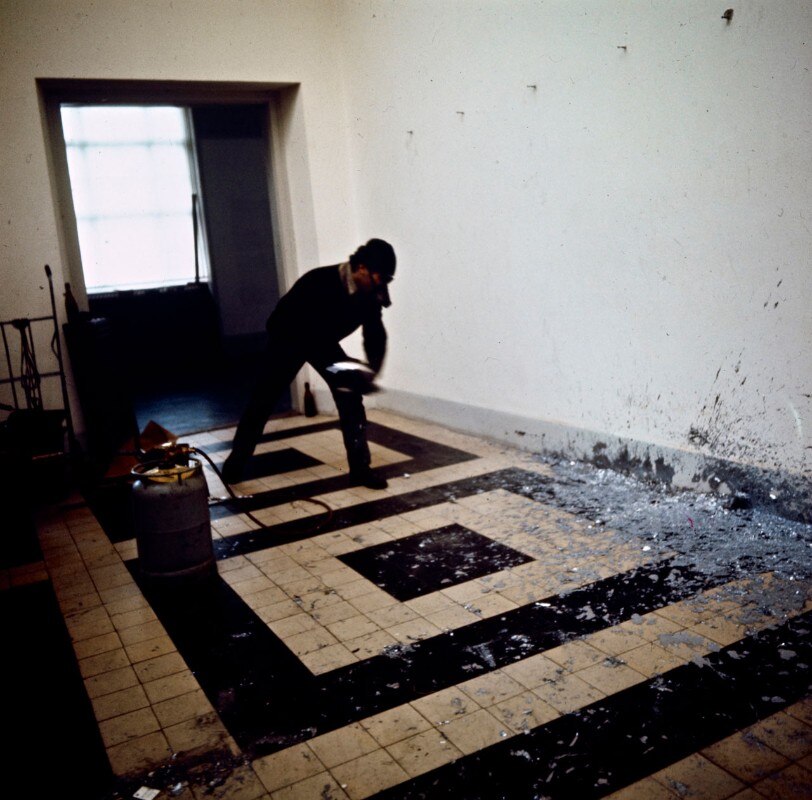
gri_2011_m_30_b143_f001_056_a_mm
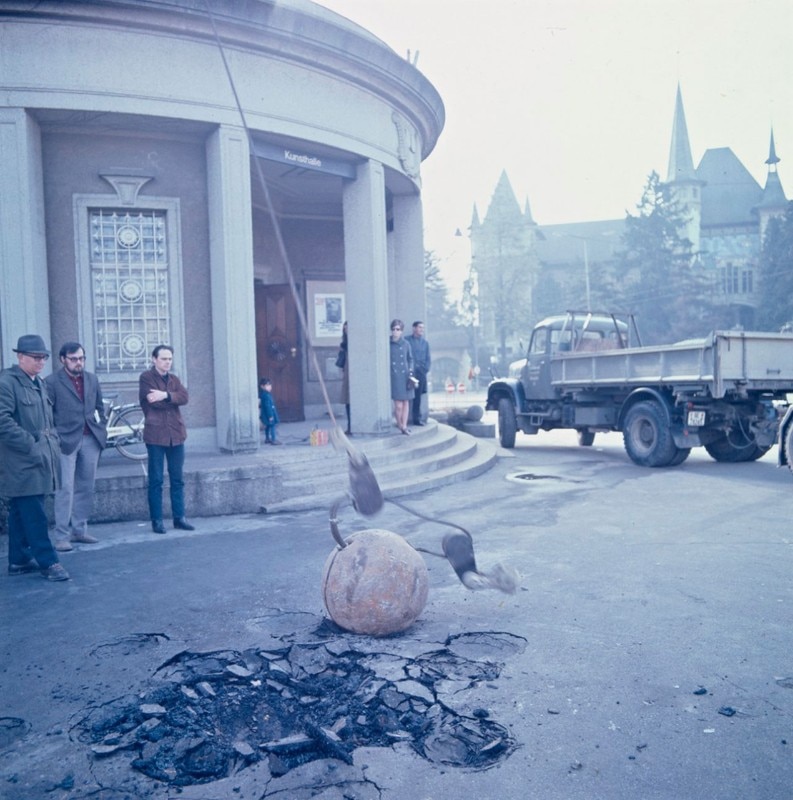
gri_2011_m_30_b143_f001_051_a
This seems to be the case for all of Balthasar Burkhard’s work. What we see in his photographs, almost all strictly in black and white, is something which resembles the original, and which at the same time is, discretely and without posturing, detached. Everything about Burkhard is anti-rhetorical. One immediately recognises the lion, or an aerial view of a city, or the slimy foot of a snail, or the tonic spectacle of a wave swollen by the wind, but what is presented of the city is its abstract reticulated nature, its topography (the fact that it is Tokyo or the City of Mexico, or Naples is clear only from the caption), and such a close-up view of the snail leads one to slowly imagine the image of a vulva (Escargot, 1999), and while the wave has a flowing movement, its theatrical nature seems shattered by a steel strip which breaks it in two.
“Balthasar Burkhard. Dal documento alla fotografia monumentale” is an exhibition which has the important merit of having brought together, thanks to the joint efforts of three institutions (the Folkwang Museum of Essen, the Fotomuseum and Fotostiftung in Winterthur and the MASI, where the exhibition is currently being held at the LAC until 30 September), the extraordinary work of an artist who was born and who died in Bern (1944-2010), which has an appeal and a strength which is slowly revealed. The exhibition at the Lugano museum, cleverly set up by Guido Comis, sets out the extensive research and many outlets from Burkhard’s career. One memorable example is how, from 1968, he was “court photographer” at the court of Harald Szeemann (as the legendary curator described him in a reference letter) during the years of his interregnum at the Bern Kunsthalle (1961 - 96), and also later. He followed him everywhere and bore witness to the most wonderful exhibitions: “When Attitudes Become Form” (Kunsthalle Bern, 1969), “Happening & Fluxus” (Kölnischer Kunstverein, 1970), documenta 5 (Kassel, 1972). He also acted in a film entitled Eiskalte Vögel, 1978, by the director Urs Egger. The 30-minute film shows a young Berkhard in a BMW cross a snowy landscape and complain of a terrible cold, and then try and slice up a frozen duck with a saw. He was also an architectural photographer (for the Bern studio Atelier 5), and also photographed for advertising campaigns (for the Ricola factories by Herzog & de Meuron in Leufen, or for the company USM). From the 1980s onwards, he focused on art (at the LAC his photographs of hairy male legs hang alongside paintings by Niele Toroni, in the same way that both series were exhibited in 1984 at the Musée Rath in Geneva).
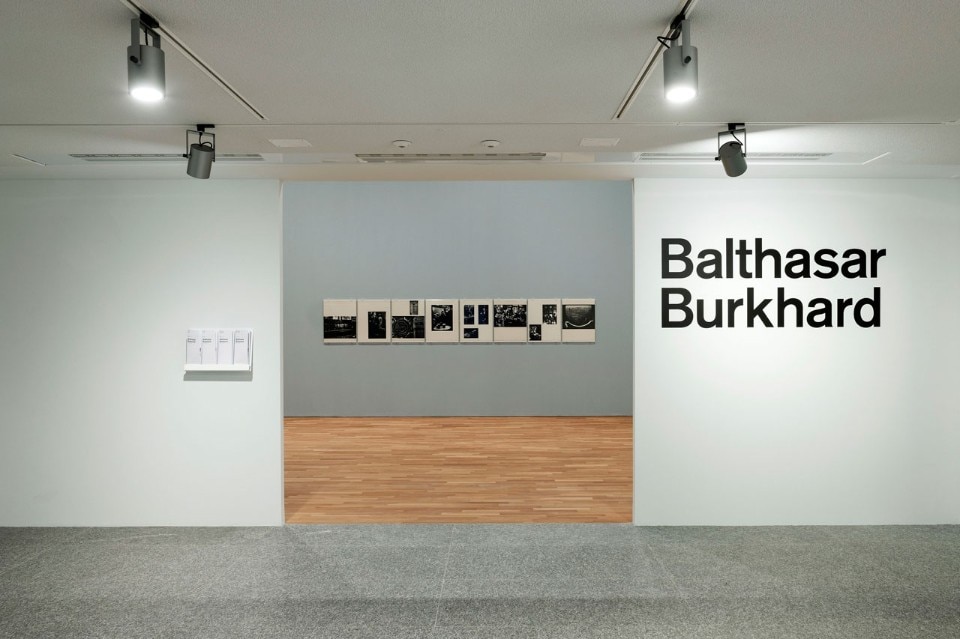
 View gallery
View gallery
One recalls his apprenticeship in Bern in 1961 with Kurt Blum. In Blum’s darkroom, Burkhard learned the fundamentals of the technique of enlargement, developing, and fixing of metre-long film reels through a rotary movement in basins. This was the origin of his most complete work, the life-size or over-sized photographs: the monumental Der Körper (1983, a female nude snaked on the ground, over thirteen metres long, made up of four different frontal shots which cancelled out perspective, transforming the body into a landscape), and the gigantic feet (Füße, 1980), knee (Das Knie, 1983), and arm (Der Arm, 1983). Through this process of enlargement, the naked body loses absolutely none of its intimacy. This is also the case with the prints on canvas, hung loosely with two clips, of simple everyday views - an unmade bed, a piece of paper on the floor, the back seat of a car.
The beginning of the exhibition sees the display a concertina book containing the photographs from Klassenzimmer (Classroom, 1962) - a subject which Burkhard held particularly dear, as stated in a quote published in the wonderful catalogue of the exhibition published by Steidl: “My first encounter with photography dates back to primary school, when I was immortalised together with my class mates by a professional photographer. The same year, my father gave me a camera to take on holiday, telling me to avoid telephone poles” (years later, in the role of professor at the University of Illinois, Chicago, the photographer was to confess to his students: “The poles were not to be eliminated, they subdivide the space and the wires give the impression of wideness and depth). Then there are images from Auf der Alp (In the Alps, 1963). Here, Burkhard examines the full sense of a sublime and very Swiss theme, the Alps, through a simple grazing herd lost in the fog, neutralising all the language and opening to much wider perspectives.
The exhibition also gives space to the tributes to Gustave Courbet, the female genitals of L’origine du monde from 1866 (L’origine, 1988), and the rough seas of Étretat in Normandy, which is the inspiration for many of his pictures (La Vague, Normandie, 1995). A year before his death, Burkhard added colour to his pictures - photographs of flowers, printed in exaggeratedly-enlarged formats (Poppies, Roses, Lilies, all from 2010). The lights go out, darkness falls. The flowers, a little wilted and with pure and violent colours - purple, red, white - are set against a pitch-black background. The tone is that of a chilling gravity. This is a familiar and easily-accepted subject - a rose or a lily - which once again reaches us in a strange manner. Once again, plain reality becomes the subject and pretext for a more complex play of signs and meanings.
- Exhibition title:
- Balthasar Burkhard. Dal documento alla fotografia monumentale
- Opening dates:
- 10 June – 30 September 2018
- Venue:
- Museo d’arte della Svizzera italiana (MASILugano)
- Address:
- piazza Bernardino Luini 6, Lugano
- Curator:
- Guido Comis


